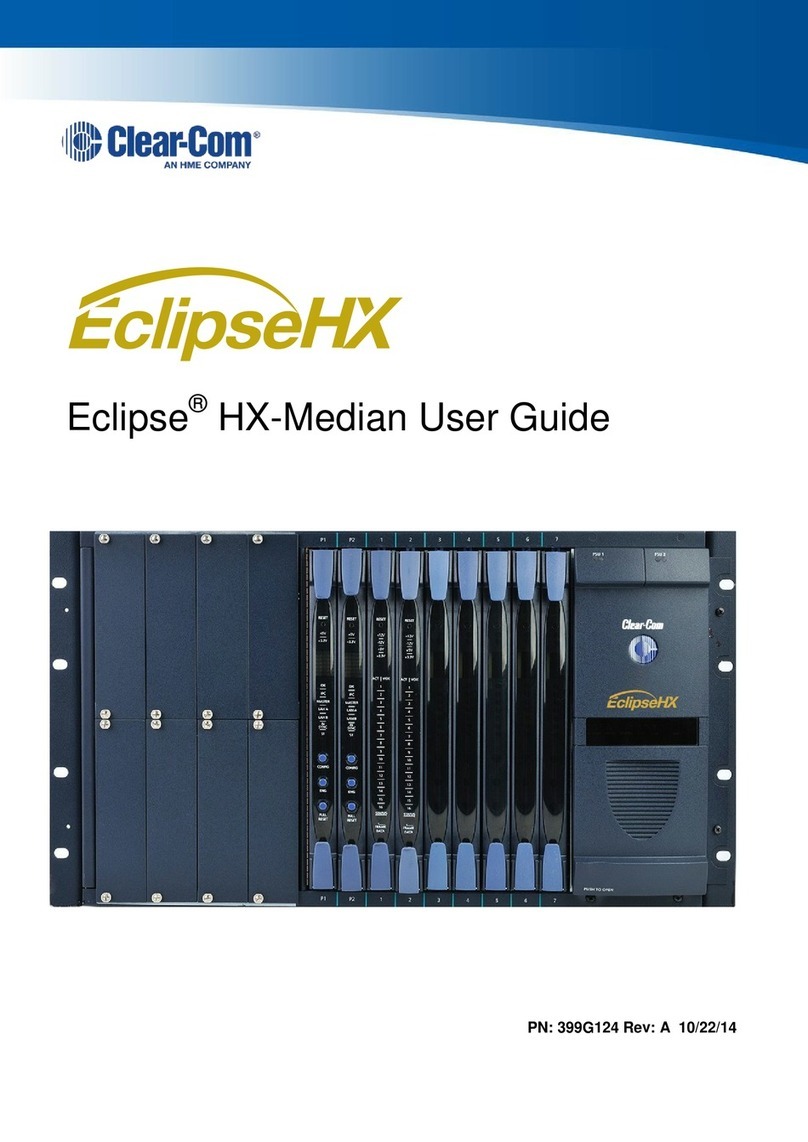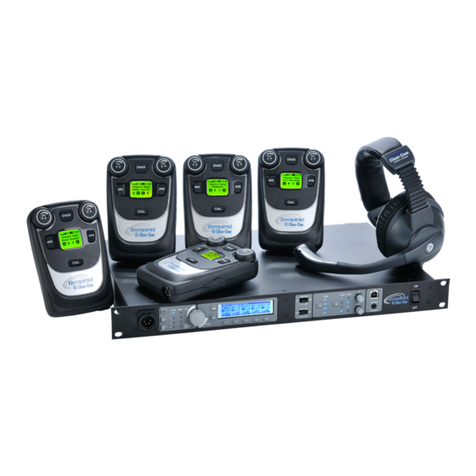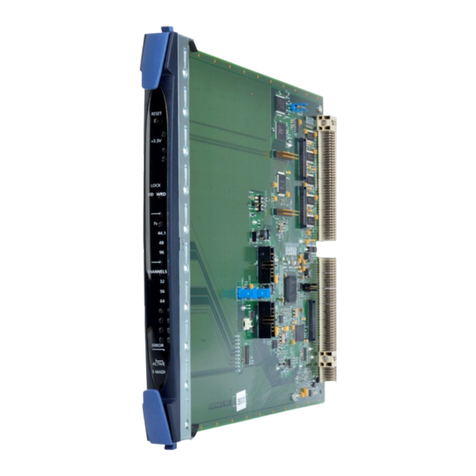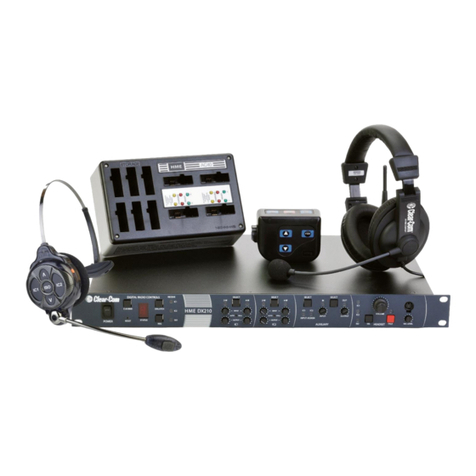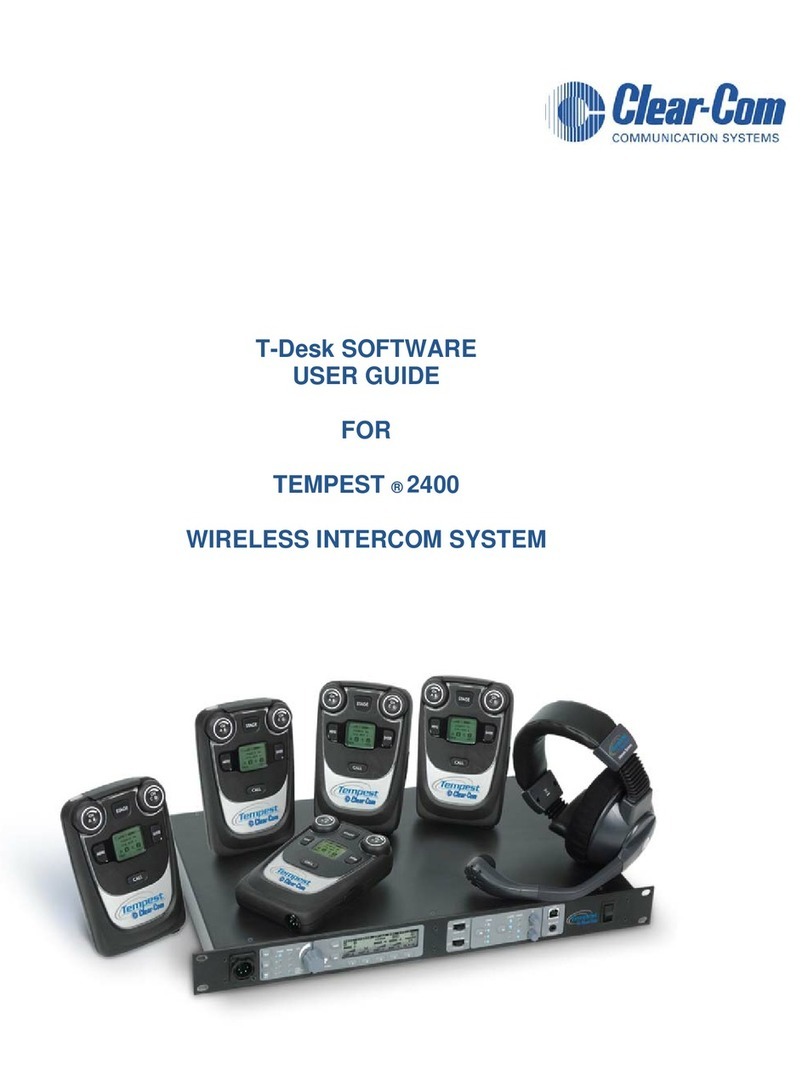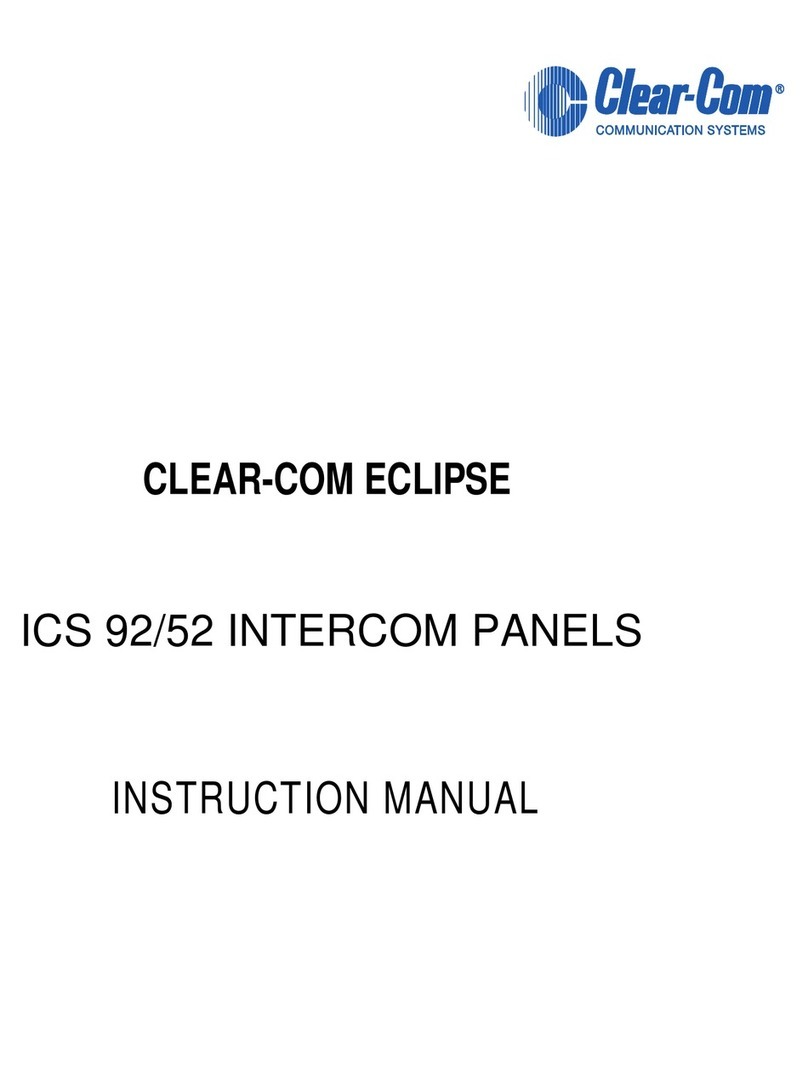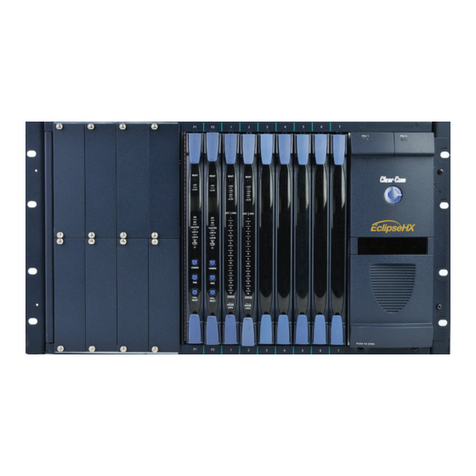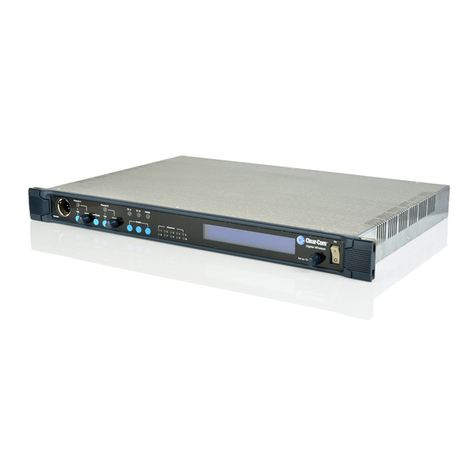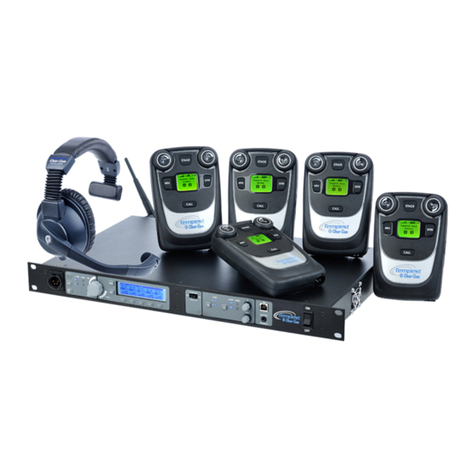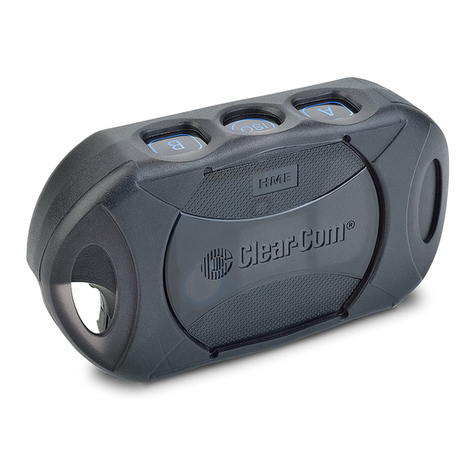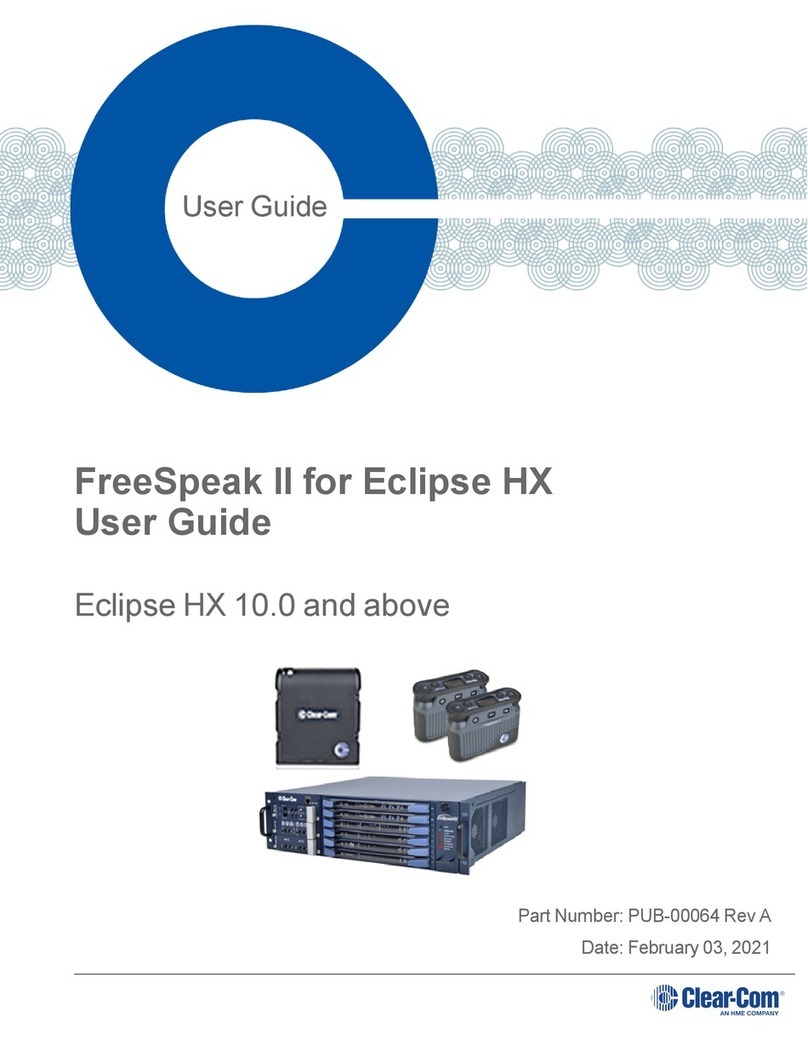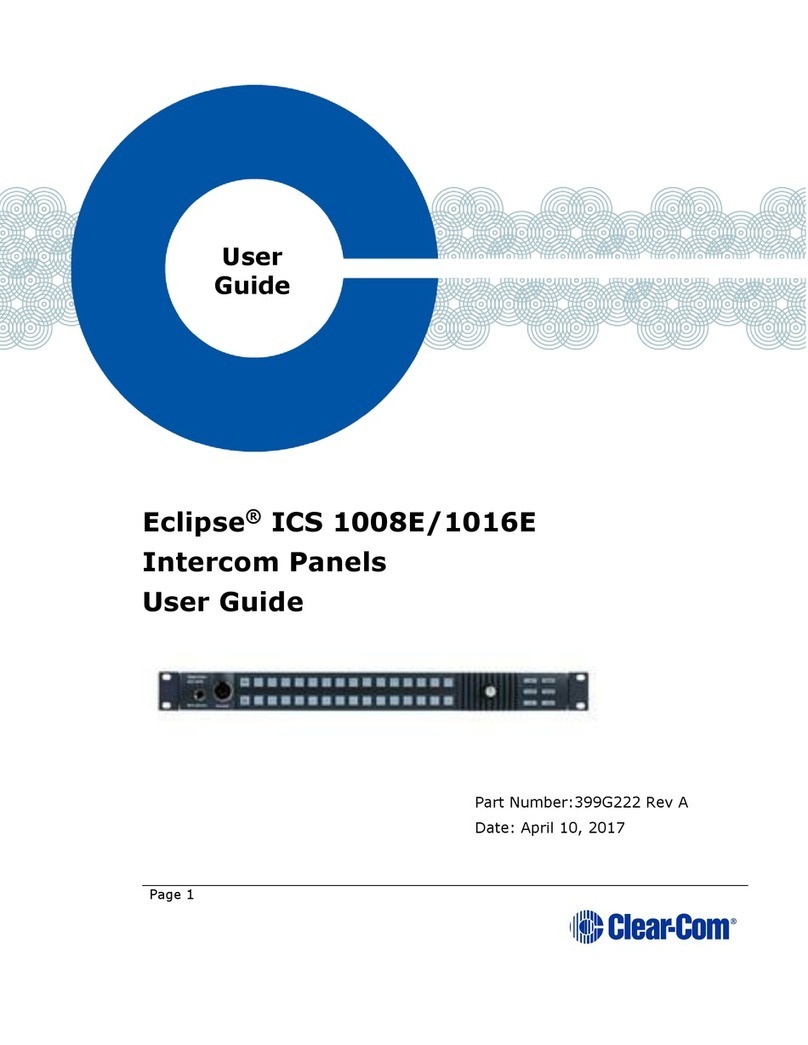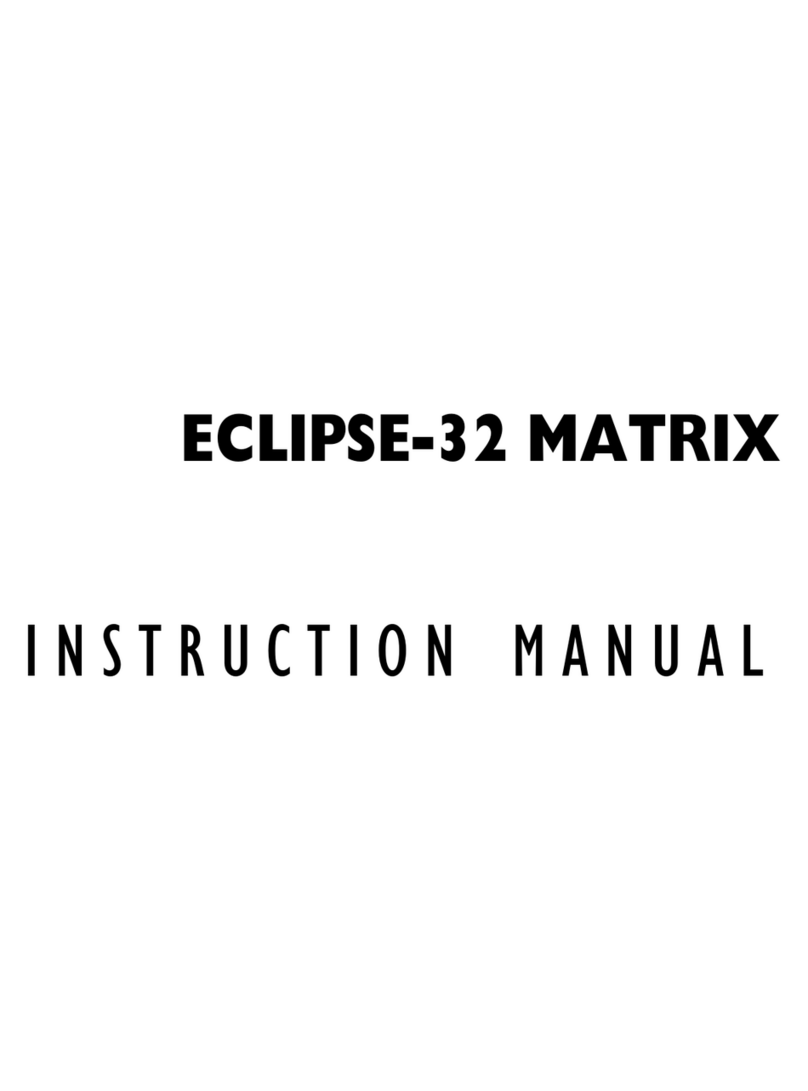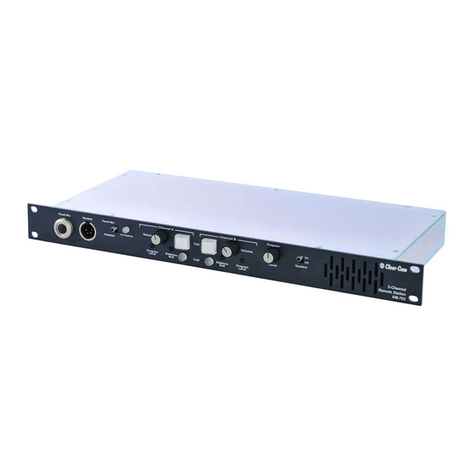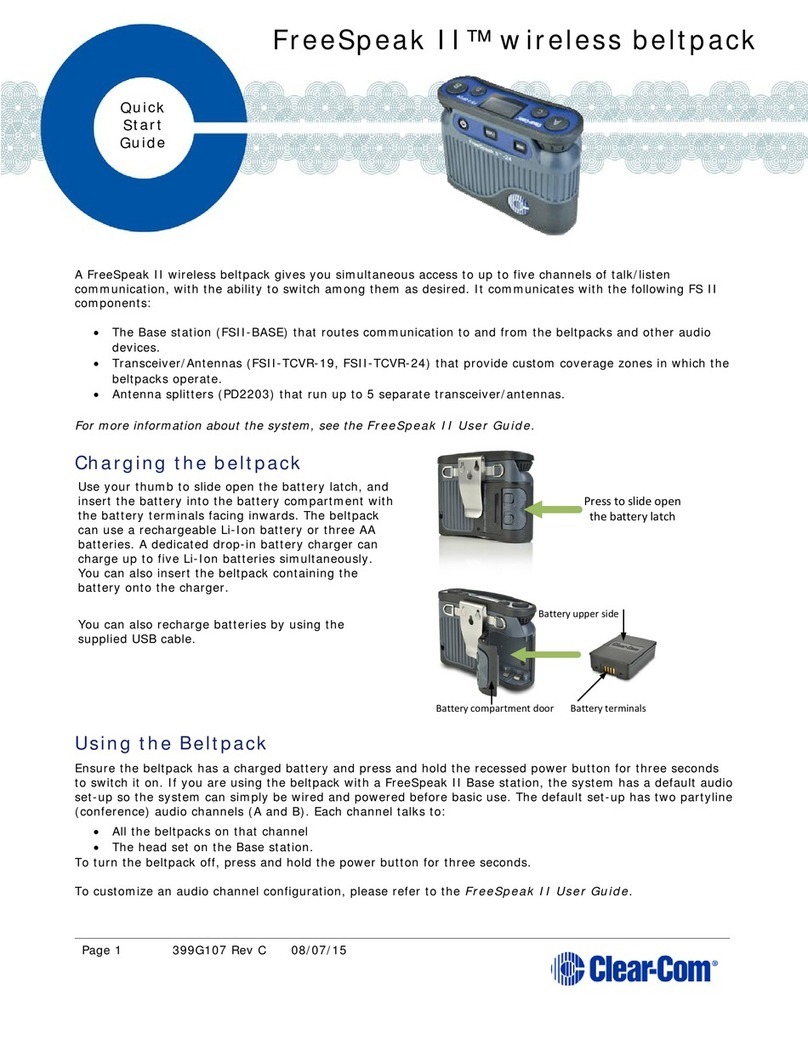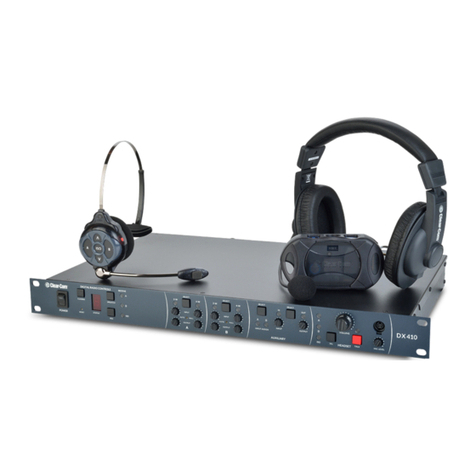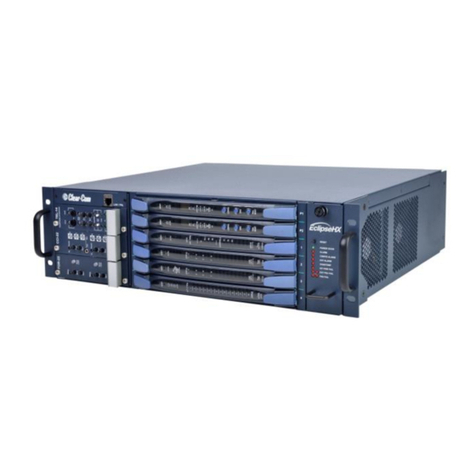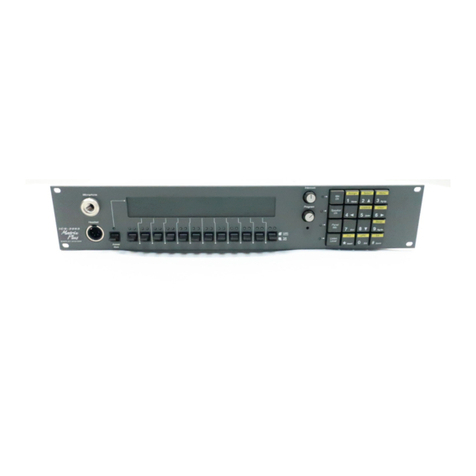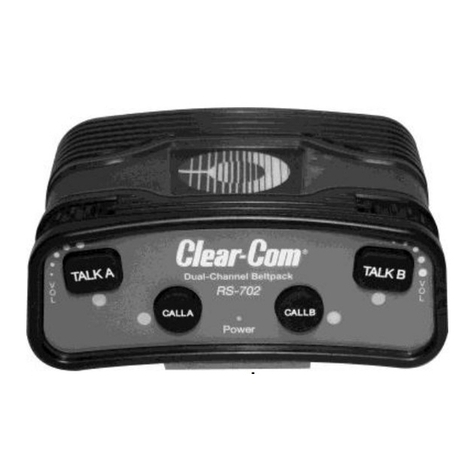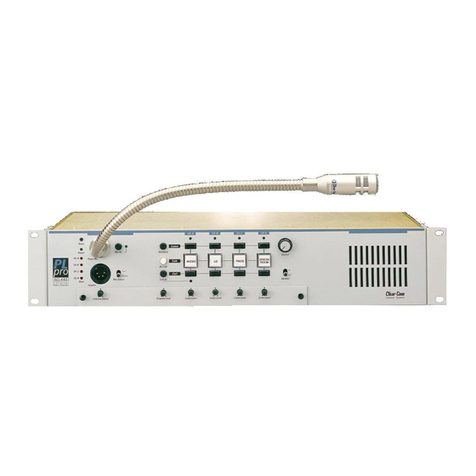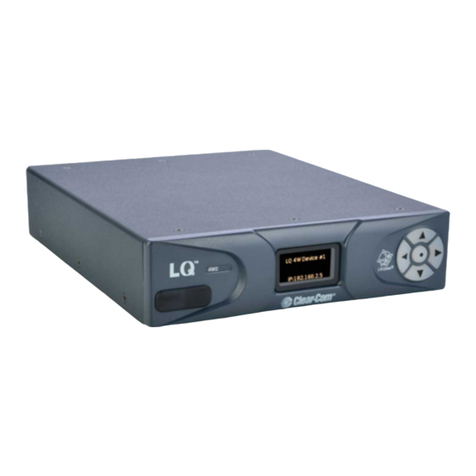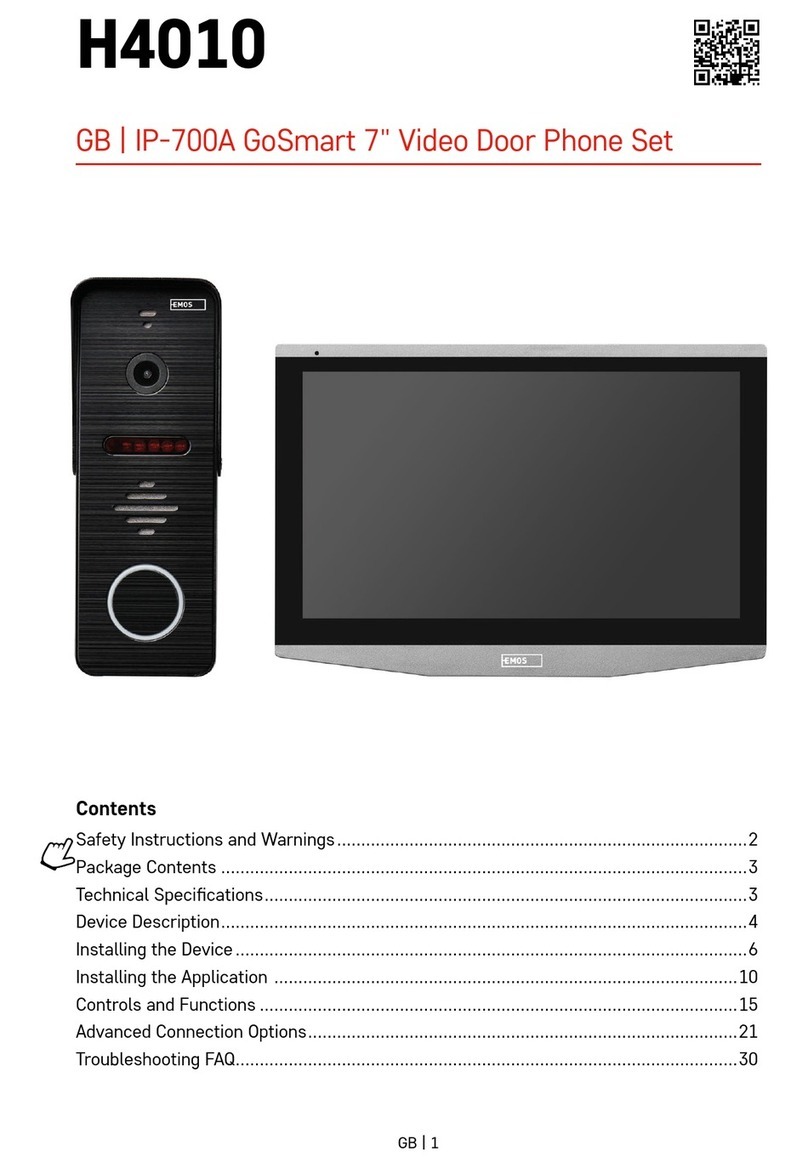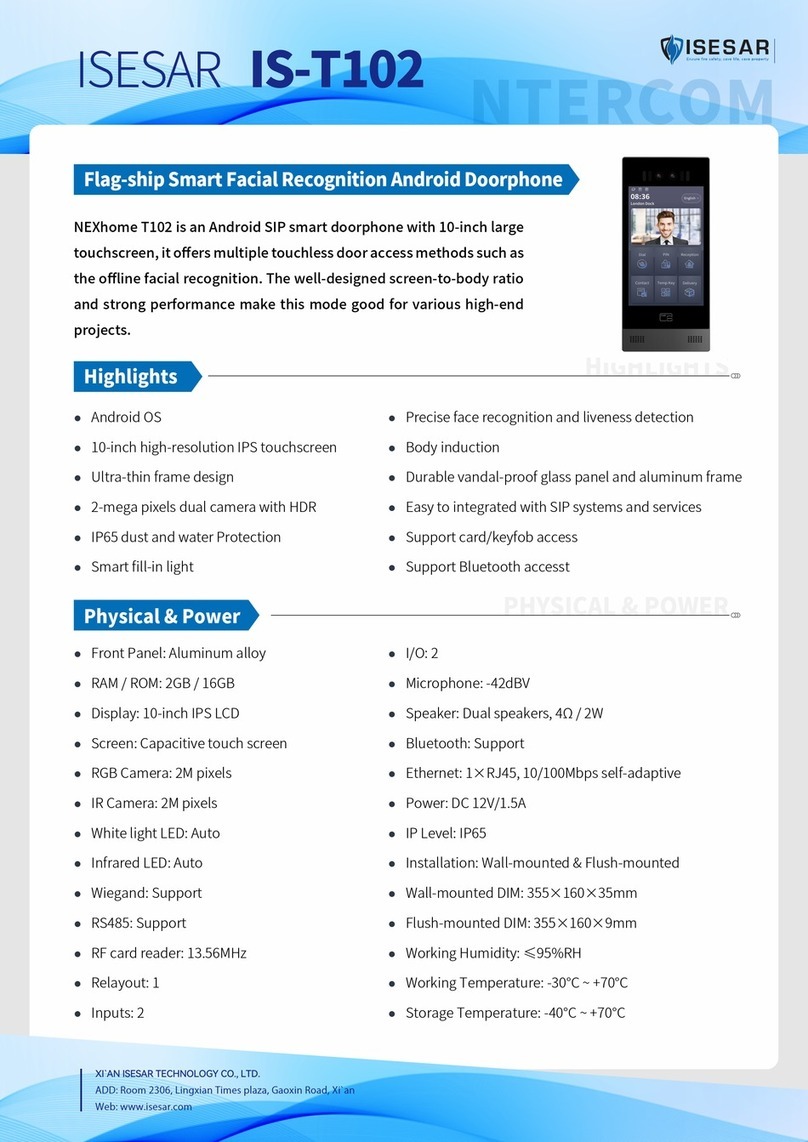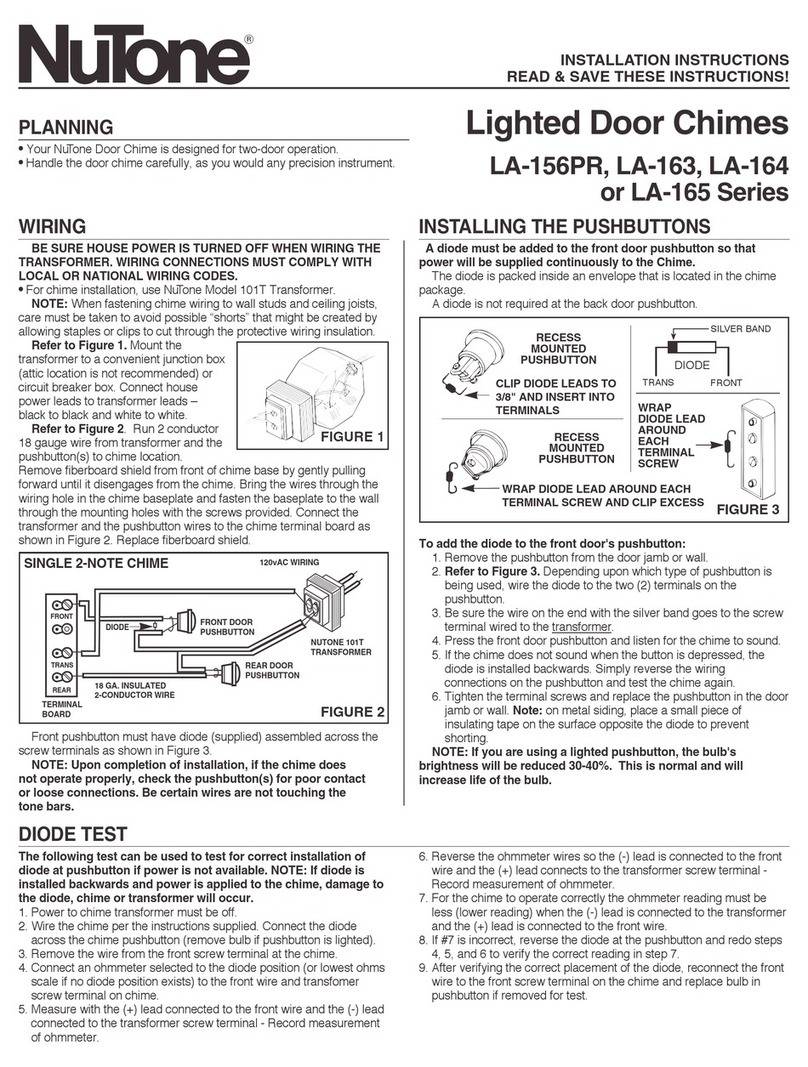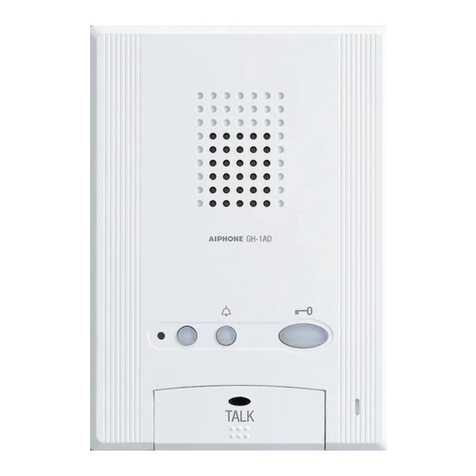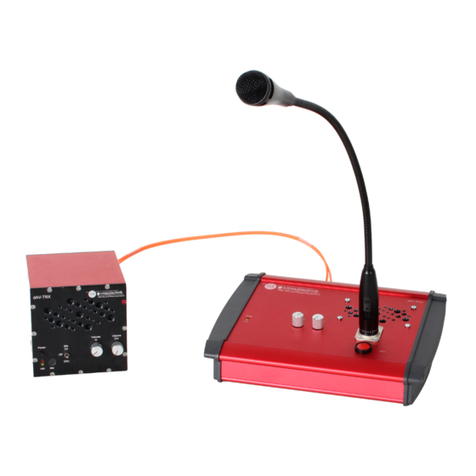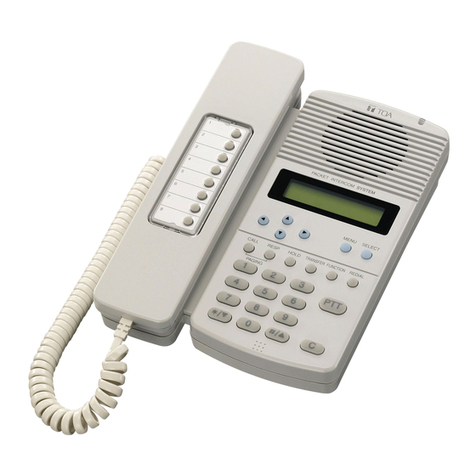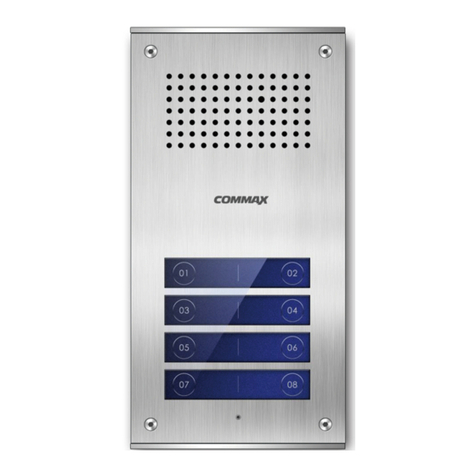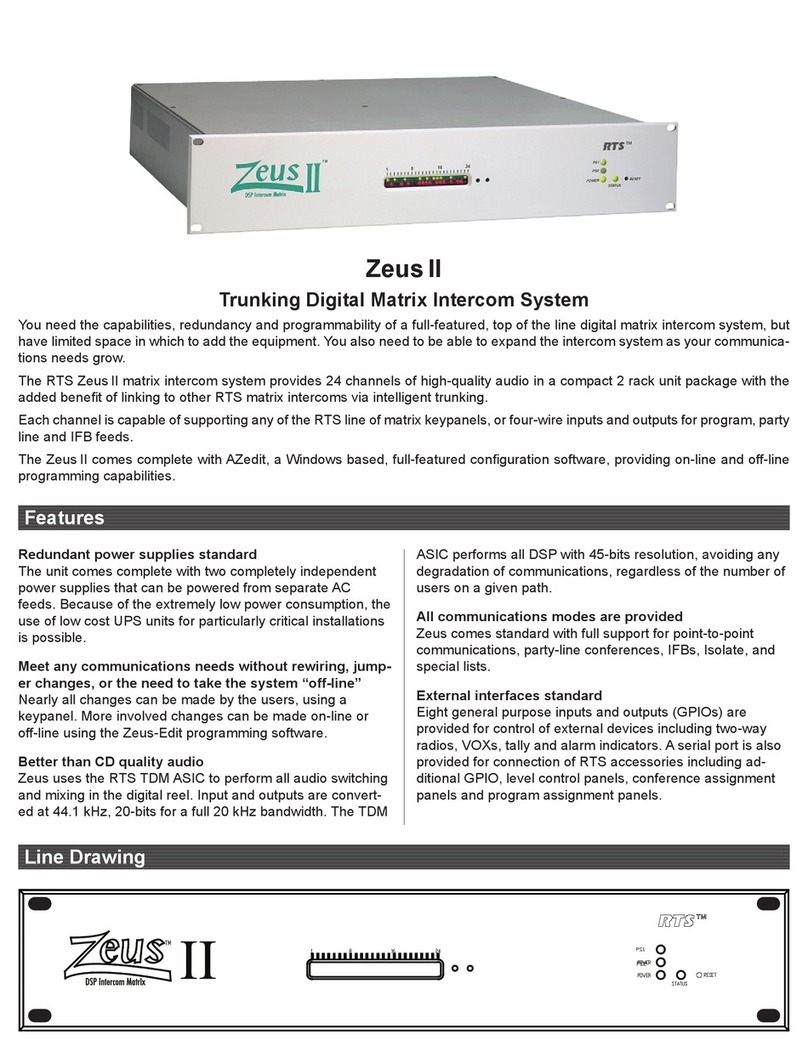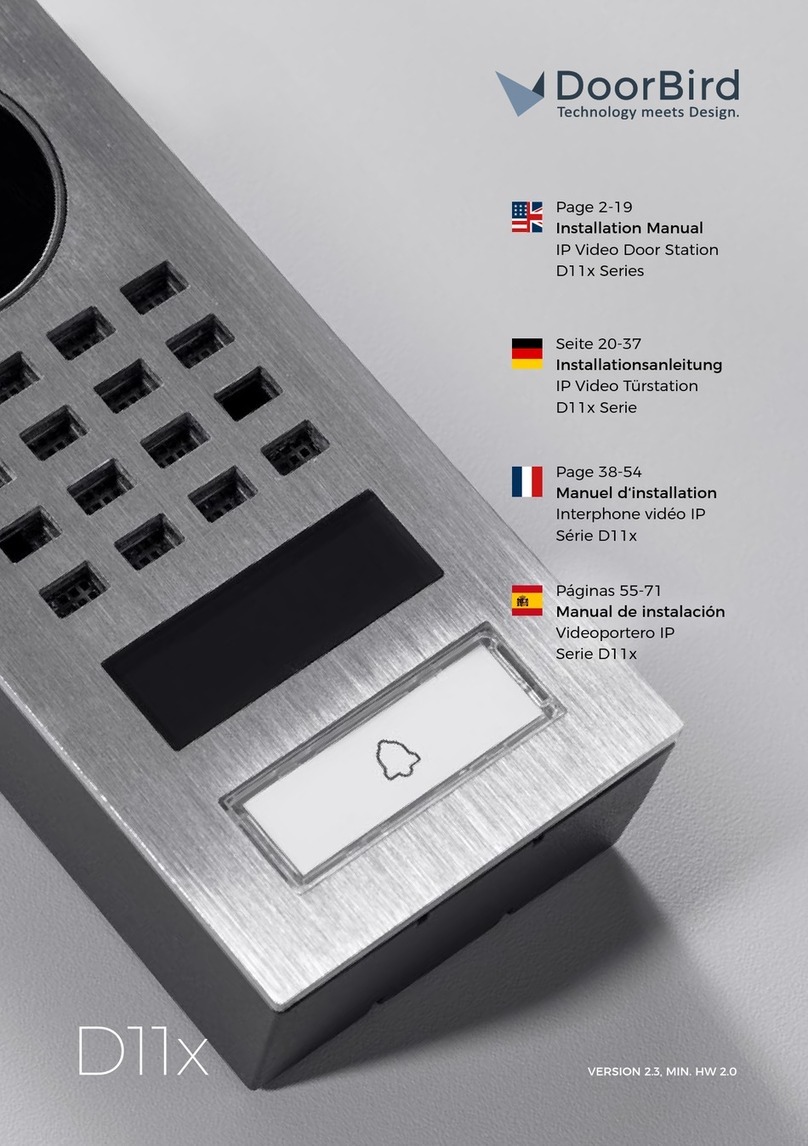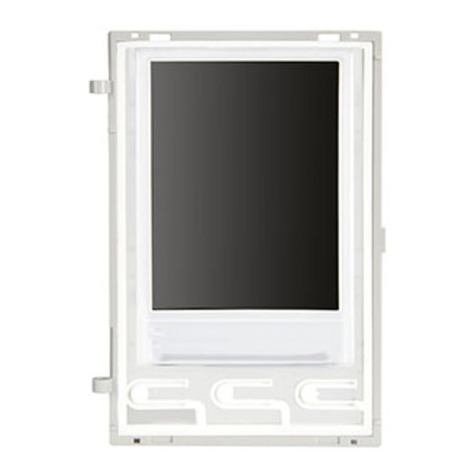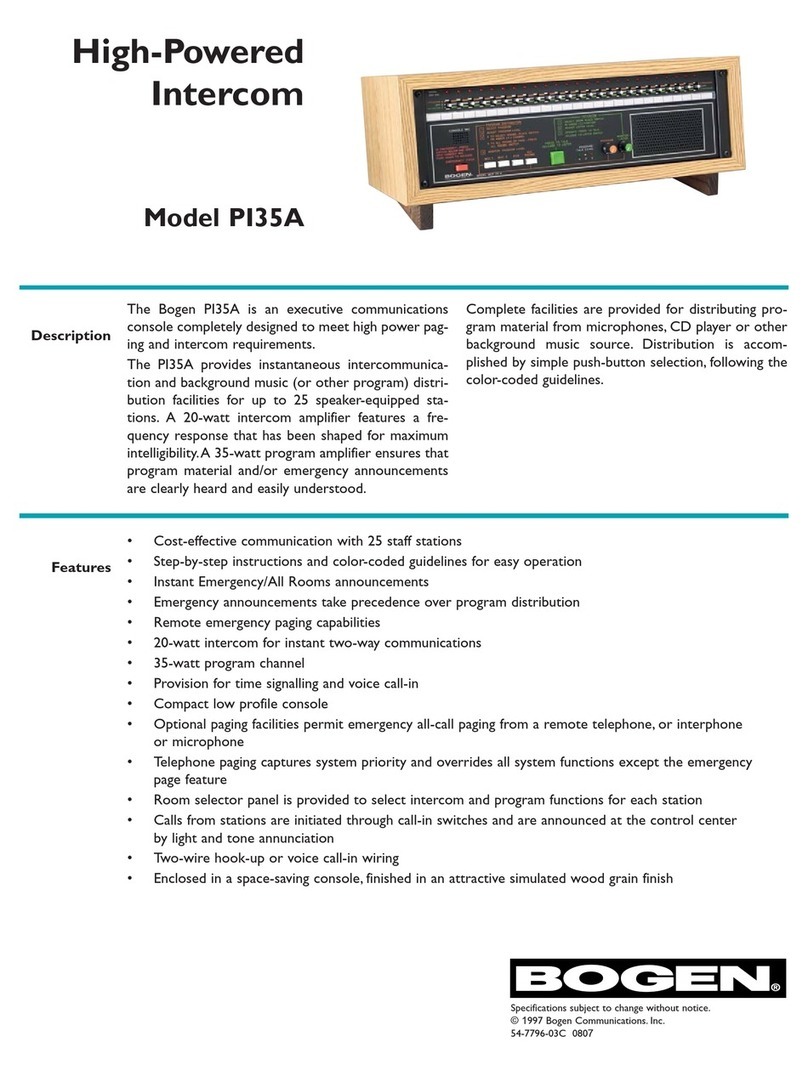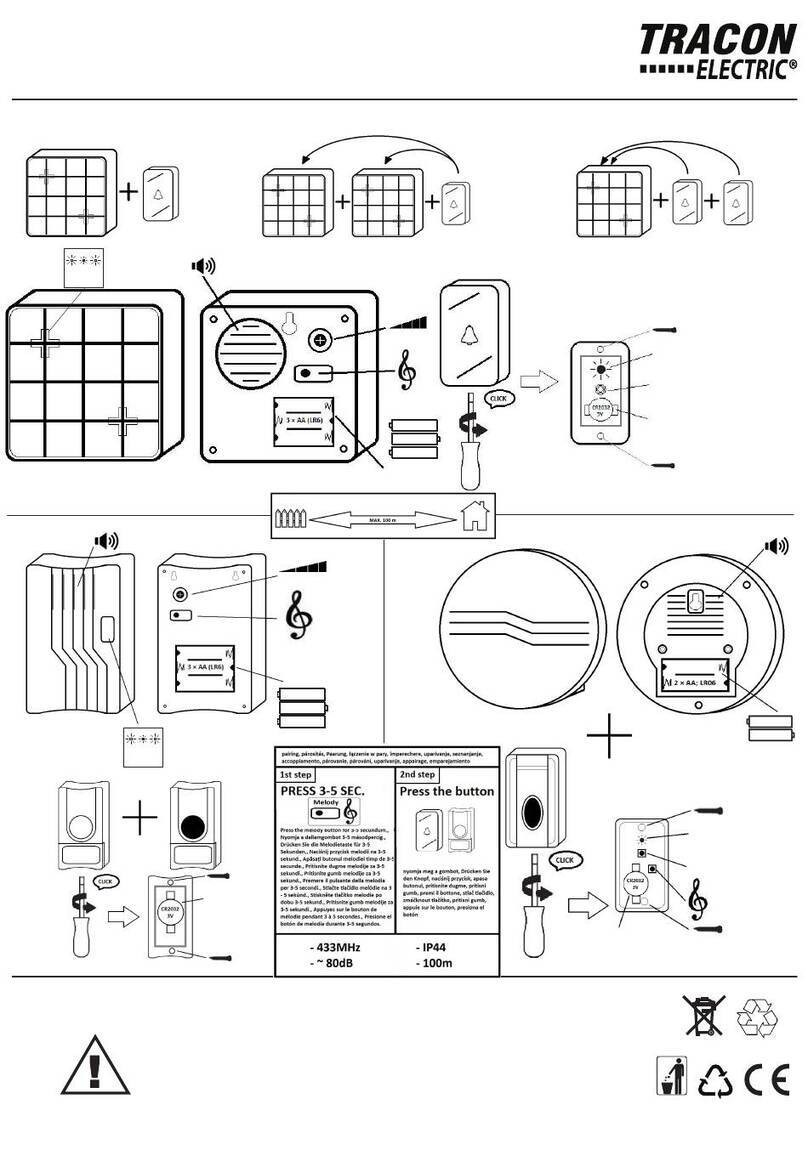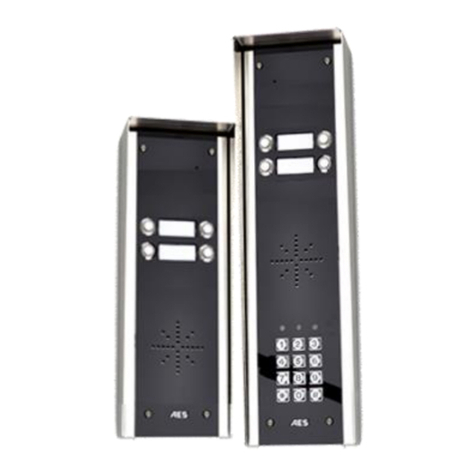
User Guide| FreeSpeak II Integra
five transceivers and each transceiver provides five beltpack ports.
Note: At this stage you might choose to register all of the beltpacks with the matrix, or at
least register one or two for system setup and testing. See Eclipse HX Software
Configuration User Guide, 5.59 FreeSpeak II Beltpacks.
3.4 Connecting to transceivers
3.4.1 Connecting one transceiver directly to a transceiver port
A transceiver connects to the transceiver port on the E-Que card using a standard
4-pair CAT-5 data cable with RJ-45 connectors. It may be located up to 800 metres
from the matrix if 24AWG cable is used or for 400 metres if 26AWG cable is used
creating a coverage area for five FS-BP wireless beltpacks in that location.
Note: It is recommended that shielded CAT-5 cable or better is used.
To know that a transceiver is active, observe the green power LED and the yellow
signal LED on the face of the unit where the RJ-45 connector is connected. Both
must be lit. Also, wireless beltpacks in the vicinity of the active transceiver will be
connected to the system and their displays will show labels and other information.
For the best, most reliable coverage, it is advisable to use a minimum of two
transceivers in any installation, positioned in different locations in the coverage
area. When more transceivers are required to support a larger coverage area or
more wireless beltpacks, a transceiver splitter will need to be introduced.
In some situations, particularly in outdoor venues, interference from non-DECT
sources can severely reduce the range of the system. In these cases we
recommend a site survey as described in Chapter 8, “Installing a System”.
3.4.2 Connecting transceivers with a splitter (PD2203)
Note: You can only use the FS II splitter with FS II transceivers that connect to an E-Que
card. You cannot use the splitter with the FreeSpeak II IP Transceiver.
A splitter (PD2203) will connect up to five transceivers to one of the transceiver
ports on the E-Que card, creating up to five coverage zones that can be overlapped
to make large areas where beltpacks can have continuous coverage. The use of the
splitter also extends the distance that the transceivers can be located from the
matrix to 1600 metres (5250 feet) if 24AWG cable is used or 800 metres (2625
feet) if 26AWG cable is used (assuming the same cable type is used to connect the
transceiver to the splitter and the splitter to the matrix).
Note: It is recommended that shielded CAT-5 cable or better is used.
For example, a splitter can be used to connect to a matrix that is located in a
production truck outside an arena or stadium, with a single CAT-5 cable going to the
Page 20




















